Understanding Amblyopia (Lazy Eye) – Causes, Diagnosis & Treatment
What is Amblyopia?
Amblyopia, commonly known as “lazy eye,” is a vision disorder that occurs when one eye does not develop properly during childhood. As a result, the brain favors the stronger eye, leading to reduced vision in the weaker eye. If left untreated, amblyopia can cause long-term vision impairment.
This condition is one of the most common causes of visual impairment in children and affects approximately 2-3% of the population. Early detection and intervention are crucial to improving vision and preventing permanent damage.
How Does Amblyopia Develop?
Amblyopia develops when the neural connections between the eye and the brain are not properly stimulated. Normally, both eyes send signals to the brain, which processes them to create a clear image. However, in amblyopia, one eye transmits a weaker signal, leading the brain to rely on the stronger eye while ignoring the weaker one. Over time, the underused eye’s vision deteriorates.
Causes of Amblyopia
Amblyopia occurs due to various reasons, primarily related to developmental abnormalities in vision. Some common causes include:
1. Strabismic Amblyopia (Misaligned Eyes)
This occurs when one eye is misaligned due to a condition called strabismus (crossed or wandering eye). To avoid double vision, the brain suppresses the image from the misaligned eye, leading to reduced vision in that eye over time.
2. Refractive Amblyopia (Unequal Prescription Power)
Significant differences in refractive errors (nearsightedness, farsightedness, or astigmatism) between the two eyes can cause one eye to be used more than the other. The brain then relies on the eye with clearer vision, resulting in amblyopia in the weaker eye.
3. Deprivation Amblyopia (Obstruction in Vision)
If an infant has an eye condition such as congenital cataracts, droopy eyelids (ptosis), or other obstructions that block vision in one eye, the brain receives limited stimulation from that eye, leading to amblyopia.
4. Reverse Amblyopia (Overuse of Patching Therapy)
Sometimes, overuse of patching therapy on the stronger eye can cause the weaker eye to develop normally while the previously stronger eye weakens, leading to reversed amblyopia.
Symptoms of Amblyopia
- Blurry vision in one eye
- Poor depth perception (difficulty judging distances)
- Squinting, closing one eye, or head tilting
- An eye that drifts outward or inward
- Struggling with reading or focusing on small objects
- Sensitivity to light
Diagnosing Amblyopia
Amblyopia is typically diagnosed through a comprehensive eye examination by an ophthalmologist or optometrist. The diagnostic process may include:
- Visual Acuity Test: Measures how clearly the child can see with each eye.
- Refraction Test: Determines if the child needs glasses and detects significant differences between the two eyes.
- Ocular Alignment Test: Assesses if both eyes are working together or if one is misaligned.
- Eye Health Examination: Identifies any structural abnormalities like cataracts or ptosis that may be contributing to amblyopia.
Early detection is essential for successful treatment, as the brain’s plasticity allows vision improvement during early childhood.
Treatment Options for Amblyopia
The goal of amblyopia treatment is to encourage the brain to use the weaker eye, helping it develop normal vision. Treatment options include:
1. Prescription Glasses or Contact Lenses
If amblyopia is caused by refractive errors, corrective lenses can help balance vision between both eyes, encouraging proper brain-eye coordination.
2. Patching Therapy (Occlusion Therapy)
A common treatment involves covering the stronger eye with a patch, forcing the brain to rely on the weaker eye. This method strengthens neural connections and helps improve vision in the amblyopic eye.
3. Atropine Eye Drops
Atropine drops can be used to blur vision in the stronger eye, encouraging the use of the weaker eye without the need for a physical patch. This method is often preferred for children who struggle with patching therapy.
4. Vision Therapy and Eye Exercises
Special exercises and activities can be prescribed to improve eye coordination and focus. These may include:
- Tracking moving objects
- Matching games to enhance visual perception
- Hand-eye coordination activities
5. Surgery for Severe Cases
If amblyopia is caused by strabismus or cataracts, surgical intervention may be necessary to correct eye alignment or remove the obstruction.
How Long Does Treatment Take?
The duration of treatment depends on the severity of amblyopia and the child’s age. Younger children respond better to treatment, with significant improvement seen within a few months to a year. However, some adults with amblyopia may also benefit from treatment, though progress may be slower.
Can Amblyopia Be Prevented?
While amblyopia cannot always be prevented, early eye screenings can help detect and treat the condition before it worsens. Parents should ensure their child undergoes vision screenings at:
- 6 months of age
- 3 years old
- Before starting school (around 5-6 years old)
If any vision problems are noticed, seeking immediate medical attention can prevent permanent vision loss.
Living with Amblyopia
Children with amblyopia may face challenges in sports, academics, and daily activities. Encouragement from parents, teachers, and caregivers is crucial in ensuring they comply with treatment. With the right approach, most children can achieve significant visual improvement.
Conclusion
Amblyopia, or lazy eye, is a treatable condition if diagnosed early. Understanding its causes, symptoms, and treatment options can help parents and individuals take the necessary steps toward vision correction. If you or your child shows signs of amblyopia, consult an eye care specialist promptly to explore treatment options.
For expert care and treatment, visit iCare Centre today and ensure your child’s vision stays healthy and strong!



Leave A Comment